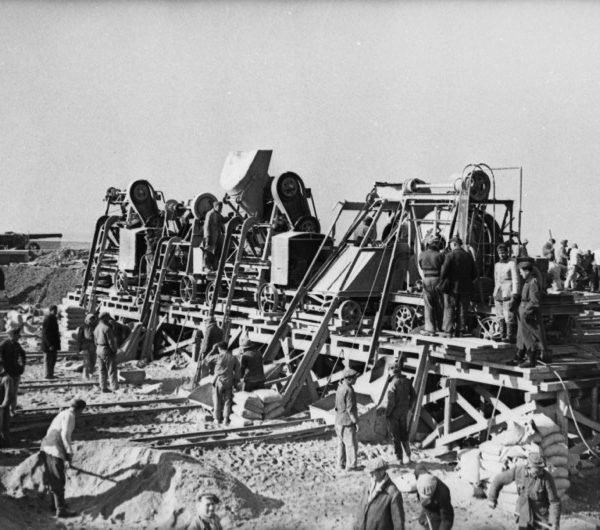Here is a link to a short film about the Lopez Rubio family in Jersey and how they came into existence during the German Occupation through the marriage of one forced labourers brought to the Island and a Jersey girl.
Those of you who might have been on one of my tours on the German Occupation of the Channel Islands will know that this is a subject that I have raised. This little film highlights the differences among the labour force brought to the Islands in huge numbers in order to construct the fortifications which were to become part of Hitler’s Atlantic Wall.
Men like Cristobel Lopez Rubio, a Spanish Republican refugee in France after the Spanish Civil War, which ended in 1938, ended up with thousands of others being “handed over” by the Vichy government to the Germans to be used as forced labourers across occupied Europe.
Conditions were tough for these forced labourers in the Channel Islands, but they were paid and they were not locked up in the labour camps which sprung up around the Islands to house them. They were able to meet locals and in this case, as with others, that culminated in a marriage to a local girlfriend.
The conditions for these Spanish Republican forced labourers were similar to those labourers from occupied western Europe (e.g. France, Belgium and the Netherlands) who had volunteered or been conscripted to work for Organisation Todt, who had been given the contract to build the fortifications of the Atlantic Wall.
In contrast, forced labourers brought by the Germans from the Eastern Front (mainly Soviet POWs but some civilians) were treated quite differently from the others because of the Nazi racial policies which regarded them as “undermenschen” (sub-human) and therefore not deserving treatment as humans. They were locked up, given the most meagre rations just to keep them alive so that they could work. Weak with little food, they were beaten if they didn’t work and keep up. The consequences were inevitable – starvation led to weakness, which led to beatings, which led to being more likely to being severely injured or killed on the construction sites which at that time would have had none of the health and safety we have now. Some literally sometimes just dropped dead.
These are the “Slave” workers often referred to, but this name needs to be reserved only for them (who made up about 20% of the Jersey imported labour force) and not the remainder of a mixed group of Germans (20%), western European volunteers (30%) and the other forced and conscripted labourers including the Spanish Republicans (30%).
Most of the imported labour force had been withdrawn in 1943 well before the Liberation as construction of the fortifications in the Channel Islands had drawn to a close and that labour force was redeployed elsewhere in Occupied Europe to build other parts of the Atlantic Wall, V weapon sites and repair bomb damage in Germany following an increasingly destructive Allied bombing campaign.
When Liberation came in May 1945, men like Cristobel were lucky in that they could stay behind with their new family. Others who had been brought to the Island as forced labourers would face the long journey home in Europe – that if it still existed – whilst the remaining “slave” labourers would have an equally harrowing return to the Soviet Union.
At the end of the German Occupation, there were quite a number of these Soviet (often erroneously referred to both then and now as Russians) slave workers who had escaped their camps and had been hidden by brave locals, who risked imprisonment had they been caught. Many of these men, having learnt English and been living in the local community had no desire to return to the Soviet Union. However, the USSR had other ideas and military attaches were despatched to the Channel Islands to make arrangements for them to return to the Soviet Union. They would have no choice in the matter and they were taken “home” only to be outcast and sent to the gulags for the next fifteen years or so for their “crime” of being captured alive and becoming a prisoner. Only then were they rehabilitated by the Soviet state and those who had risked their lives and liberty to help them during the Occupation were recognised by the presentation of Soviet gold watches.
And so back to the Lopez Rubios – a lovely story of a family of whom I am fortunate to know some members and who were brought together during the German Occupation, a period of our history which we commemorate ending 75 years ago.

